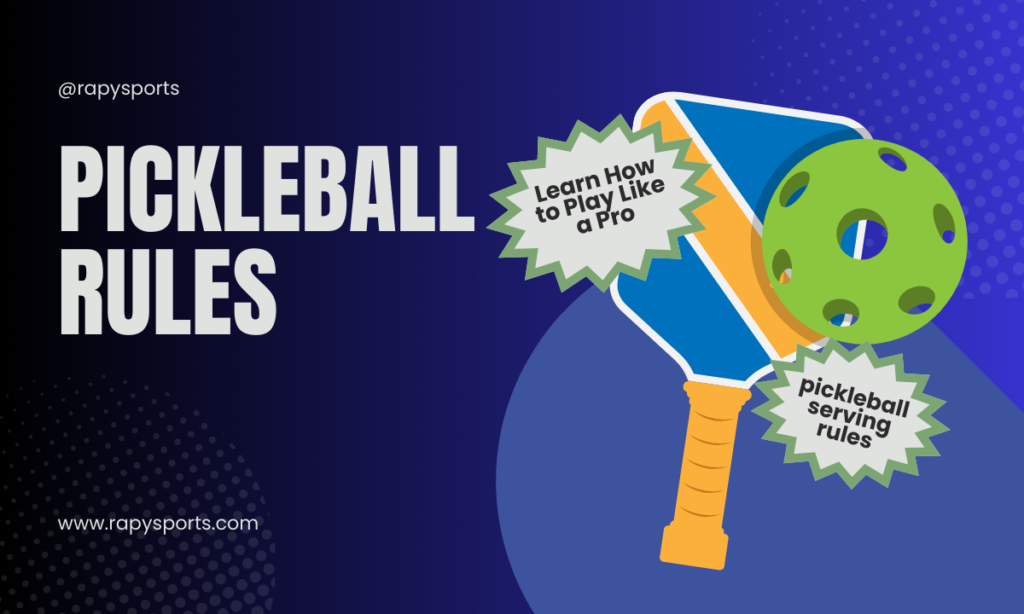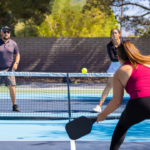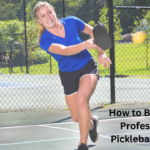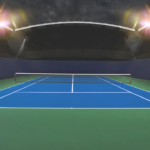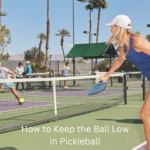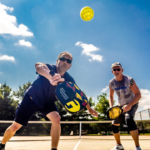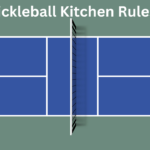Pickleball is synonymous with badminton, table tennis, shuttlecock, and other similar court games in which opponents use paddles or rackets to hit the ball or cock. It is also known as a paddleball game and has been played at both national and international forums. No matter whether you’re a beginner or a master, understanding pickleball rules is needed to step onto the court!
Key Rules and Aspects of Pickleball
| Aspect | Details |
|---|---|
| Pickleball Overview | A court game similar to badminton and table tennis, played with paddles and a ball, suitable for 2 to 8 players. |
| Court Dimensions | Court size: 20 x 40 inches, Net size: 36 x 34 inches, Serving line is 7 feet from the net. |
| Pickleball Rules | Understanding the rules is essential for all levels of play. Doubles require opponents to stand in zones and hit with composite paddles. |
| Serving Rules | Serve from behind the service line, at least 7 feet away from the net. The ball must not touch the ground before reaching the opponent’s zone. |
| Non-Volley Area (Kitchen) | A 7-foot area near the net where volleys are not allowed. Players cannot step into this area during a volley. |
| Double-Bounce Rule | The ball must bounce once on each side after a serve before players can volley. |
| Line Calls | A ball landing on the court lines (except the kitchen) is considered “in.” Balls landing in the kitchen during a serve are considered “out.” |
| Faults | Violations such as stepping into the non-volley zone during a volley, serving the ball into the net, or hitting the ball out of bounds. |
| Scoring | Points are awarded to the serving side only. The serving team switches after a fault. |
| Para Pickleball | Wheelchair players follow similar rules with adaptations like allowing a second bounce before returning the ball. |
Pickleball Rules
Before the ruling, the basic knowledge of the game is necessary to build a better understanding of it. For your information, pickleball is a court game that is typically played among two, four, six, or sometimes eight players. When it comes to pickleball rules doubles, opponents stand parallel to each other in their defined zones across the net and hit the ball through composite paddles. The net has up to 40 holes and is considered a midcourt line that divides the court.
Pickleball Court
The Pickleball court has left and right service areas which are equally divided by a fine net. Each half is painted with sidelines, baselines, and a centerline where orange depicts the baseline and blue is for the centerline. These lines indicate the side of each player and the boundary to play within.
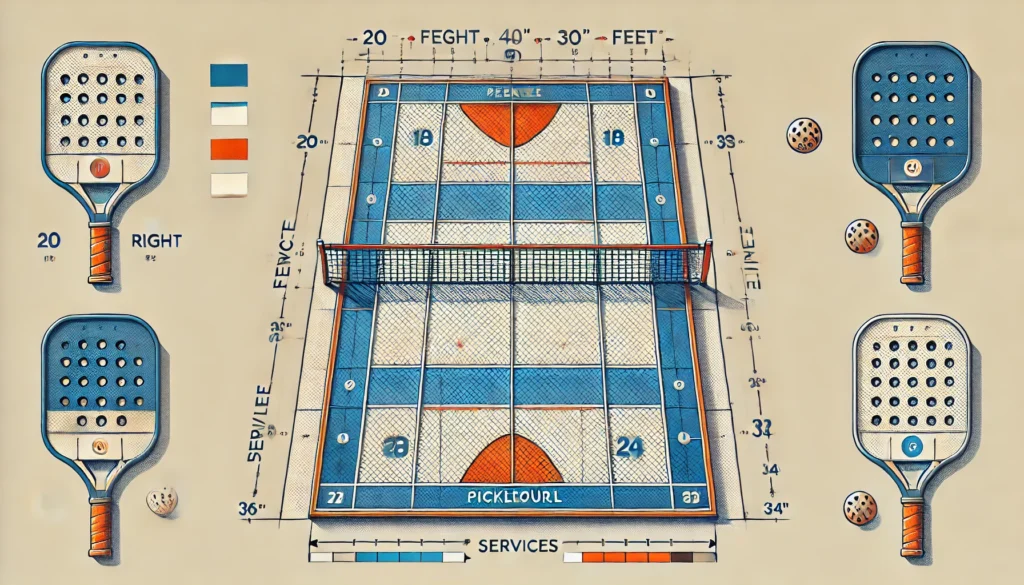
Typically, the size of a pickleball court is 20 inches x 40 inches where two to four players can play at a time. While the dimensions of the midcourt net are as follows: 36 inches x 34 inches. A player stands on the serving line which is approximately 7 ft. away from the hanging net. The entire court has white borders or boundaries that limit the range of players.
How to Play Pickleball
Pickleball is an easy-going court game with simple directions and rules, but mistakes and errors are unaffordable especially when you’re a professional player. I am not saying this to disappoint you but to encourage your will to understand the principles and rules of this game to perform like a pro. So, chin up players, and continue reading!
In the pickleball court, the opponents stand diagonally and begin playing; the player who first hits the ball is considered as “serving size” and points will be awarded to him. As I mentioned before, there are seven feet between the net and player’s vicinity which is called the “non-volley area”. Both players continue to serve from their playing zone until one of them drops a ball.
Pickleball Serve
As you are now aware that opponents stand in a diagonal position and serve the ball to each other using composite paddles, so pickleball serve is to be made in that transverse state. Serving a ball might sound easy-going but it’s not because you have to look after certain rules related to your standing position and serving style to avoid any mistakes. Let’s discuss:
There are the following important rules linked to the pickleball serve: (1) it should cover the distance of at least seven feet to avoid falling in the non-volley area, (2) while serving the ball contestants should stand on the serving line, (3) serving ball should fly high enough so that it won’t touch the ground, and (4) a player should serve the ball with his toes behind the service line.
Let’s be realistic! In case you’ve made a mistake, the pickleball serving side will switch to your opponent instantly in case of both single and team play. The player who’s not on the serving side and made a mistake has room for fault and will get a chance. Long story short, if you fail an attempt, the service side will shift to the opponent.
Return of Serve
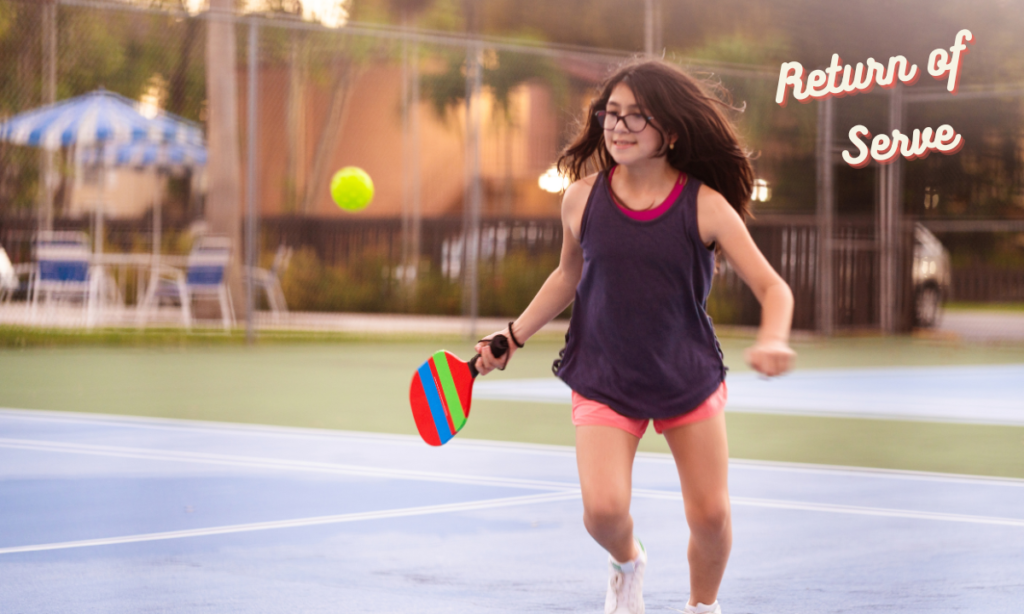
Now we have reached the point where a player has served a ball according to pickleball rules, so it’s time for the opponent to return the serve. As far as return of serve is concerned, the transverse standing position matters the most. Once you serve the ball, it comes to you from the opposite side and at that time you should wait a few seconds so that the ball hits the ground at least once.
Volleys
“Ball is in the air” is known as a volley; a ball that doesn’t hit the ground or not bounce is considered a volley. While serving a volley, a player should stand behind the serving line; even touching the serving line will be reflected as a fault. Therefore, you need to be extra conscious about your standing position and vicinity.
Double Bounce Rule
A player who is serving the ball at first should strike with enough force that the ball bounces at least once near the receiving edge or opponent’s vicinity. This bouncing should be continued by then on each player’s side and is called the double-bounce rule. After that, a player standing in a non-volley area can hit the ball with no bouncing.
Non Volley Area
Non-volley area is the seven feet distance from the net to the player’s standing position. As the name suggests, this area is not for volleying. Non-volley zone is restricted, and you cannot step in that area otherwise it will be considered a fault. This rule aims to prevent smashes or crashes.
The non-volley area rule is simple yet strict as your apparel or accessories are also not allowed to enter the dimensions of a non volley area when volleying. Legally, you can only step in this zone when you are not volleying. In some states, this non-volley zone is also called the kitchen.
Line Calls
Pickleball line call rules and directions are uncomplicated and straightforward however making a line call on the court can be challenging for beginners. The pickleball is only considered as correct when it lands on all lines of court except the non-volley or kitchen zone. These lines are also known as “in” and depict that pickleball is served on the centerline, baseline, or sideline.
On the other hand, if the pickleball hits the zone other than these lines or in the non-volley zone, it is known as “out”. In a few words, any other shot that hits the area except the non-volley zone is “in” and the ball which hits the kitchen area is “out”. A serve contacting the kitchen is also a fault.
Faults
A fault is synonymous with a mistake, and it happens when you violate any of the pickleball rules. For example, if a player didn’t serve the ball in court or the ball contacts the net or non-volley zone is a fault in pickleball. On the occasion of a rule violation, the score will be given to the opponent or serving team and you’ll also lose your chance of service.
Para Pickleball
Based on the player’s ability, pickleball is primarily divided into two: standard pickleball and para pickleball where para pickleball is designed for wheelchair players. It was invented in 2016 by the USA pickleball association and aims to develop the rules and regulations to make para pickleball a professional-level sport.
In para pickleball, the wheels of a wheelchair are taken over as the body or legs of a player and other rules are the same as standard pickleball. In other words, you have to be conscious of boundaries, non volley zone, and double bouncing rules. However, there is leverage provided in para pickleball due to the disability of players as they are allowed to reply to the service after the double bounce, and more.
In para pickleball, the player should stay in a non-moving position while serving the ball and one push is allowed for these special players before serving. Pickleball sessions can include both standing or wheelchair players as well, and in that scenario, the rules are applied respectively. In simple words, the standing player will follow standard rules while a person in a wheelchair will follow rules according to para pickleball.
Scoring
A player or team gets a point in pickleball only when they are on the serving side, and they can continue serving until they make a fault. Once you’ve made the fault, the serving side will get switched instantly and you’ll lose the point. This is also called side out. To learn more about exciting pickleball scoring, read this.
Amendments to Pickleball Rule
Last and this year, pickleball rules have faced different controversies over the official rulebook, and for that reason, the officials have bent some rules. Don’t worry the rules are the same as I have explained above but some changes have been made that include the involvement of the pickleball community. Let’s discuss!
The service was optional before but by the start of 2022, it has been made obligatory, which is a good change because this way new contestants will get the opportunity to succeed. Secondly, players can now use paddles and both hands to impart or convey the spin serve on the pickleball. This rule was legally made in 2021 and it aims to add better spinning and controlling in pickleball.
FAQs
The kitchen is an area of seven feet from the net to the player’s standing position. It is also called a non-volley zone and this area is not for volleying. Non-volley zone is restricted, and you cannot step in that area otherwise it will be considered a fault. This rule aims to prevent smashes or crashes.
The basic rules of pickleball are as follows: (1) volleying is restricted to the volleying zone only as you cannot do it in a non-volley or kitchen area, (2) ball must be inbound during the game, (3) pickleball should end at odd figures like 1, 15, or 21, (4) serving cannot be done from any other point on the court except baseline, and (5) single bounce is a must thing on each player’s side.
Double bounce is a rule in pickleball that states that a player who is serving the ball at first should strike with enough force that the ball bounce at least once near the receiving edge or opponent’s vicinity. This bouncing should be continued by then on each player’s side and is called the double-bounce rule. After that, a player standing in a non-volley area can hit the ball with no bouncing.
Usually, players are not more into switching hands while playing pickleball as it requires additional time and momentum. In my opinion, shifting your hand is not a promising idea for the reason that it is risky as you’ll lose your grip. However, there is no restriction and rules allow players to switch hands at their convenience. It is suggested to switch the hand only when the ball bounces to avoid fault.
Pickleball sport is a blend of energy, enthusiasm, life, and physical involvement. According to health line research, pickleball is good for people who’re controlling or improving their body weight via different means; however, you will not see an instant change in your body as weight management also involves diet plans, sleep schedules, and more.
Final Words
Without a doubt, sports bring an array of health benefits including physical fitness and mental relief; likewise, pickleball is an energetic and fun-going game that involves body movement, stability, muscle contraction, vision, focus, and whatnot.
This game is quite popular in the US and has graphics related to table tennis and other court games. While playing pickleball without faults, you have to gain knowledge of its correct rules and guidelines which are thoroughly discussed in this blog.

I’m a passionate pickleball enthusiast with years of experience, dedicated to sharing the latest tips, strategies, and insights about the game. Whether you’re a beginner or a seasoned player, my goal is to help you enhance your skills and enjoy pickleball to the fullest.

